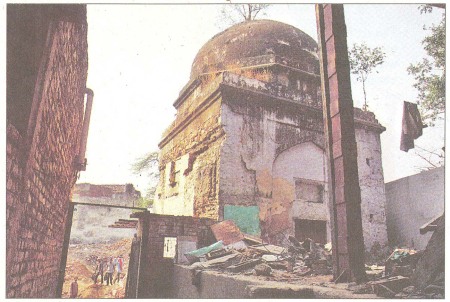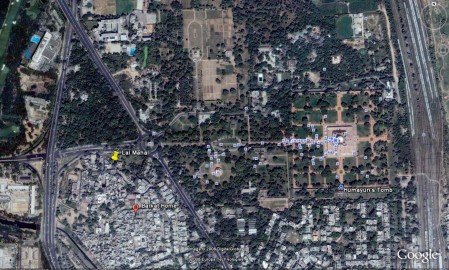NEW DELHI: A four-member team of the Supreme Court-appointed heritage conservation committee went to inspect the Lal Mahal ruins on Sunday but
could not do so as the place has been completely sealed off. The visit was in response to the dire observations in the Parliamentary Committee report and a plethora of news reports – including that in The Times of India – about the partial demolition of the 13th century monument.
Prof AGK Menon, member of the committee said: “Reacting to reports on the partial demolition of Lal Mahal, we visited the site to assess the situation. However, the area has been completely sealed off and we were unable to see it. For now, we have been unable to give a feedback to the committee.” Discussions are now on about the next course of action.
“We might make a formal request to have the seal opened so that we can see the ruins for ourselves. Unless we see the extent of damage, we will not be able to give a report,” said a member. Sources said that pressure was building on the ASI to notify the remains of the Lal Mahal as a protected structure and the ASI has not yet submitted a report to the culture ministry on the issue.
The recent Parliamentary Committee report had come down hard on the ASI and MCD for the Lal Mahal fiasco. The Committee stated that the concerned agencies were shying away from their responsibility and passing the buck. It blamed poor management for the sad situation.
The committee took note of the historical significance of Lal Mahal as one of the relics of the Delhi Sultanate era and the earliest surviving Islamic palace in the country. It also noted that the monument is situated less than 20 meters away from Bara Khamba, an ASI protected monument. “Lal Mahal is not a notified building despite being 800 years old and many structures like Lal Mahal are disappearing because they are not notified heritage buildings,” says the report.
The report said: “There was utter lack of coordination and confusion between various agencies of the Union as well as the state government and the local bodies. The committee is perturbed to note that the concerned agencies are shying away from their responsibility and passing the buck to blame each other”. The report also said that a communication was sent to the ministry of tourism and culture to provide information about the role of different agencies in protection of monuments in Delhi and NCR, but there was no response from the ministry.



 Posted by lalmahal
Posted by lalmahal 

.jpg)
.jpg)
.jpg)
.jpg)

